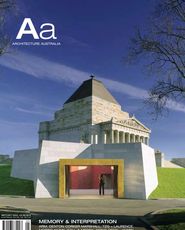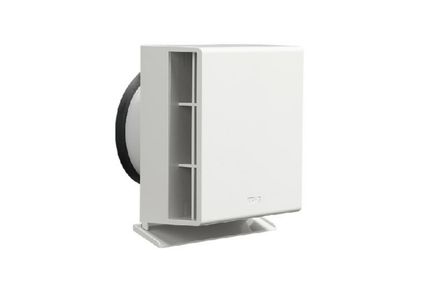IN 1993, THE Royal Australian Institute of Architects adopted the International Union of Architects Declaration of Interdependence for a Sustainable Future. By adopting the declaration, the RAIA affirms the responsibility of the architectural profession, as a key player in the construction industry, to embrace an integrated approach to ecological, social and economic sustainability. This should be done through individual practice and by bringing to bear our collective expertise and influence in the community.
Ten years later, the RAIA Council at its July meeting endorsed a proposal for the Institute’s Environment Sub- Committee to be elevated to the status of a National Committee with expert representatives from around the country. The new National Environment Committee will be chaired by Professor Lindsay Johnson and will be guided by the strategic objectives contained in the RAIA Environment Policy. I believe this move will re-energize as well as re-focus our membership at a time when governments, private companies and the community are discussing, debating and implementing strategies and policies on sustainability.
The Environment Design Guide (EDG), developed by the RAIA in 1996, and now published by the RAIA on behalf of the Australian Council of Building Design Professions (BDP), offers a significant body of knowledge in three volumes. The guide is fast approaching the Practice Notes both in quantity and quality of information.
The National Environment Committee will contribute to the BDP Environmental Design Guide by expanding the body of knowledge available to architects and building design professionals as well as providing expert comment and opinion on issues including Green Building Rating Tools, Design Strategies and Benchmarks. I am sure the committee will make a major impact by assisting architects and other design professionals who face growing social and regulatory pressure to address greenhouse and sustainability concerns.
Sustainability will be one of the key issues raised during 2004, which has been designated the “Year of the Built Environment”. This is an initiative of the RAIA which we are excited about. It will mean collaborating with government, industry, environmental and community groups on a year-long program to increase awareness about the built environment and its influence on quality of life and provide directions for a positive and sustainable future. Undoubtedly YBE 2004 will be a year of focused activities and initiatives through which industry organizations and governments can recognize and enhance all aspects of our built environment. The RAIA hopes that it will have some positive policy outcomes as well, such as a national policy on the Built Environment.
The YBE 2004 program will be expressed through six major themes: Towards Sustainable Communities; Healthy Living Environments; Excellence in Building; Architecture for All; Our Built Heritage; and Imagining the Future.
The objective is to encourage all Australians to discover and celebrate how the built environment makes a difference to their quality of life and to examine ways in which we can improve planning and design.
YBE 2004 is a challenging endeavour, and an enormous opportunity for the RAIA and the profession to demonstrate the relevance, value and importance to the community of what we do.
David Parken FRAIA, HONAIA
National President















